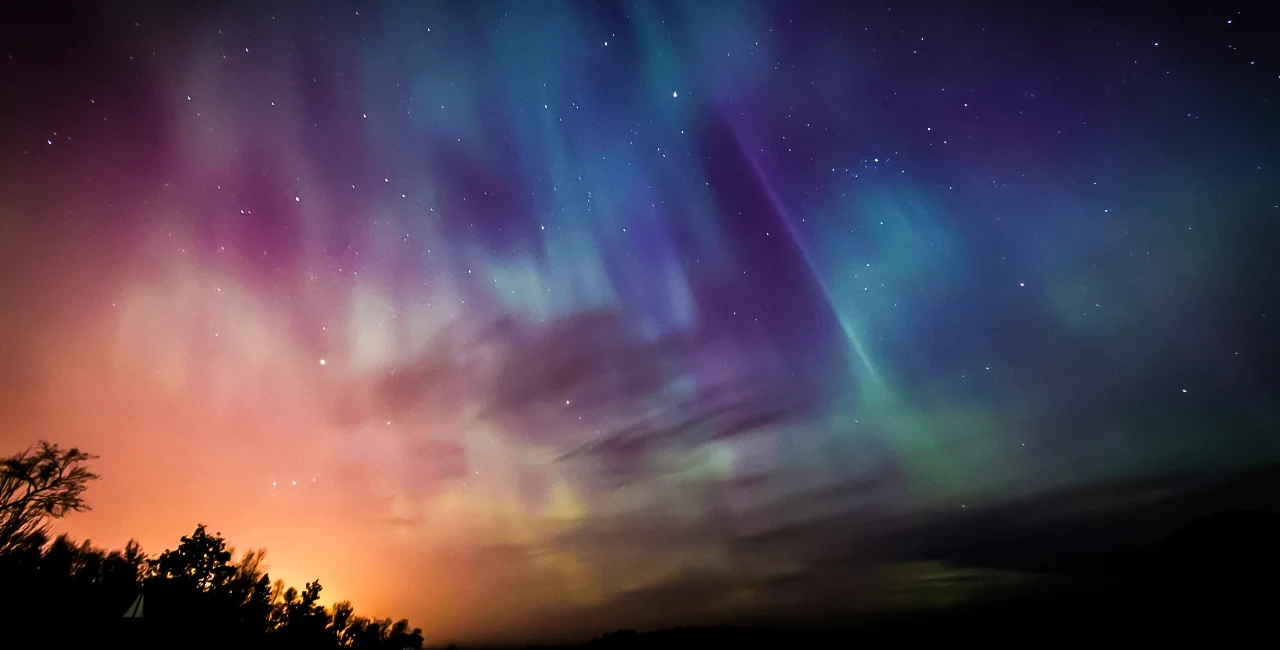People in Czechia this weekend may be able to see the aurora borealis, or northern lights, at night due to the sun’s recently highly eruptive activity. Astronomer Petr Horálek from the Institute of Physics in Opava says that the lights should be visible on both Friday and Saturday nights.
Horálek says that much of the globe’s middle latitudes, which cover most of Europe, may see the aurora borealis. The reason for this is the recent explosiveness of the sun, which in recent days has recorded over 10 strong eruptions. “Clouds of plasma should hit our planet during the Friday night hours and cause geomagnetic storms that will probably last through the entire weekend," said Horálek.
The astronomer added that parts of the sun’s surface erupt when the planet reaches the peak of its 11-year solar cycle. "Denser solar wind is rapidly escaping from the sun in the form of plasma clouds. At the moment, astronomers know of at least three such clouds that are heading our way," said Horálek.
Visibility not always clear
However, the occurrence of the auroras cannot be 100 percent guaranteed. "These [plasma] clouds also carry their own magnetic field, and they must have the right properties to interact with the Earth's magnetic field to cause the aurora borealis. Unfortunately, these exact elements cannot be predicted in advance," said the astronomer.
Auroras that can be observed from the Czech Republic are usually very weak. According to Horálek, inexperienced observers may mistake them for light pollution. "In the Czech Republic and Slovakia, do not expect a bright glow like in the Nordic regions; the auroras are usually only detectable photographically and are difficult to see with the eyes, due to – among other things – the excess of harmful light pollution from cities," said Horálek.
🌄 Na severu ÄŒech byla v nedÄ›li pozdÄ› veÄer k vidÄ›nà vzácná polárnà záře. Vznikla v důsledku geomagnetické bouÅ™e, kterou způsobily erupce na Slunci. pic.twitter.com/fFsXKUBQ6u
— ÄŒT24 (@CT24zive) February 27, 2023
He explained that the now-new moon will increase the likelihood of the auroras being visible. Otherwise, the moon would outshine the phenomenon with its light.
Those interested in observing the phenomenon should find a place with an unobstructed view to the north, preferably at high altitudes. It should also be an area where light pollution will not disturb observation; a rural area is therefore optimal.
For those interested in observing the auroras, Horálek recommends watching the so-called auroral monitors at spaceweatherlive.com, or via the Aurora Alerts mobile application.













 Reading time: 2 minutes
Reading time: 2 minutes 























